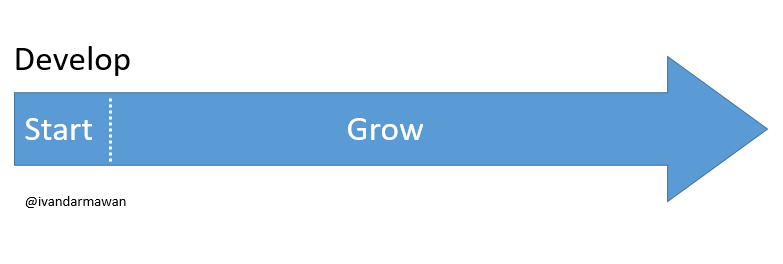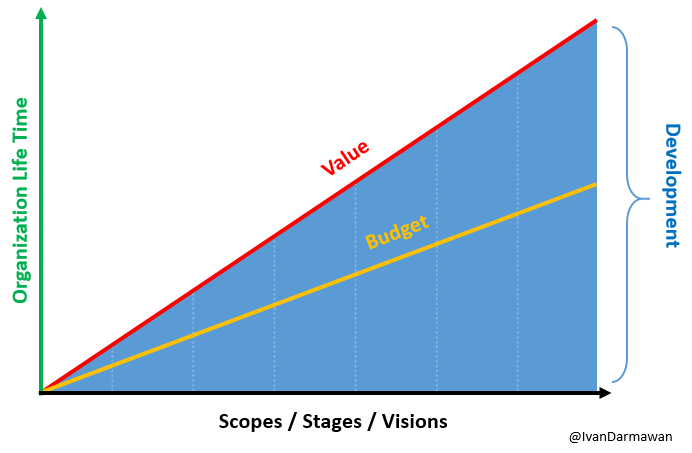This is the 2nd part of the “Understanding the Scrum Guide” series. Here you can read the 1st part. The purpose of the series is to discuss what people might be thinking when they read the Scrum Guide for the first time. For the discussion, I will refer much to the English dictionary as I think it has the most neutral definition of any vocabulary. Neutral means it might be not influenced by any management text-books and consultants.
The quote picked from the Scrum Guide is still the same as the 1st part, but this time it is more focusing on “developing“.
Scrum is a framework for developing, delivering, and sustaining complex products
The Scrum Guide
What is Developing?
The title should be something like “what is developing a complex product?”. I will talk about the meaning of complex products later in the upcoming post. So, let’s focus on the word developing only for now.
“Developing” according to the dictionary is:
developing
adjective
– growing and becoming more mature, advanced, or elaborate.
There are many words that have similar meanings with “develop” as a verb, for example: grow, evolve, expand, enlarge, spread, progress, prosper, succeed, thrive, and flourish. There are also synonyms that I found interesting such as initiate, instigate, originate, invent, establish, and generate. So, the word “develop” without adding any prefix and suffix could be mean:

Why I chose the word “grow” over other synonyms? The reason is that it has something to do with nature and cultivation. Growing naturally is the culture you want to embrace when it comes to adopting agility principles for your organization. My apologies for talking about culture as it is too far for this moment.
The Scrum Guide uses the word “developing” instead of “develop” as quoted above. So, we can replace the world developing with growing. Am I seriously talking about this word-formation? Yes, it really matters. When you are using the word develop in terms of growing, then by the dictionary, you don’t know exactly when you will stop the development.
Organization development has no end. It is the people or nature who manage to stop the development at a point in time. At that point, you don’t develop anymore. Here the people or nature are the constraints.
Ivan Darmawan
How Come a Development Has No End?
The development has an end or has no end is a matter of perspective. It is also depending on your background and experience of doing jobs. Your position in your organization also influences your perception of development. Let’s put a phone evolution analogy to get more understanding of the development term.

The development has an end if your development scope is about developing a single phone. But from the market and organization perspective, the phone development will not end. Another analogy, you can also limit your scope just to build an office sky scrapper as a contractor. But, the development will take another level of understanding when you are a mayor of a city. An office building can be replaced anytime but not a city.
The Scope of Development (Growing) with Scrum
The Scrum Guide does not explicitly say about when the development must end. For organizations that their business depends on continuous innovation, indeed the development will not end. In fact, they will be transforming continuously into a new way of development, growing, inspection, and adaptation to face the ever-changing market.
It is okay to develop a product based on time, budget, and scope as success criteria, but then what’s next? The next one will also need time, budget, and scope, and then what’s next? Development with Scrum is beyond time, budget, and scope constraints.
The Scrum Guide actually says about the success criteria of a product development which is delivering products of the highest possible value.
Scrum (n): A framework within which people can address complex adaptive problems, while productively and creatively delivering products of the highest possible value.
The Scrum Guide
Keep in mind to ask this question when you are talking about the scope of development with Scrum: “What kind of value we want to achieve in this particular development?” The following image describes the quick view of value.

Value is a big topic, so stay tuned for my upcoming posts.
If you find a client-vendor contract relationship then the scope of development is always belongs to the client or user. The vendor might be only developing part of a scope. For a software development, it is recommended to have a vendor as a partner rather than just a contractor that can be replaced.
Let’s close this post with a Dilbert:
